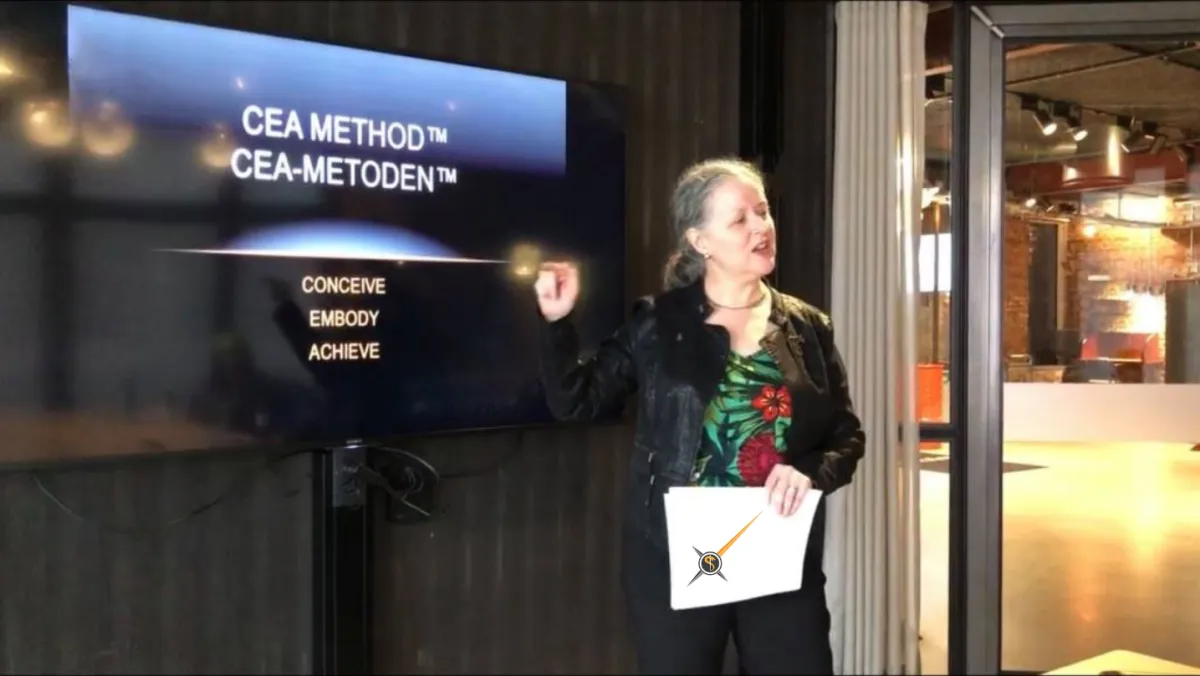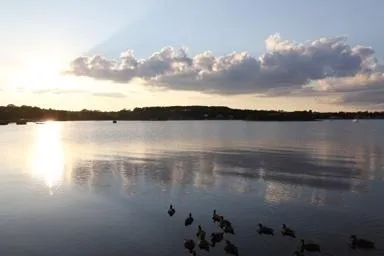
What if you didn't have to wait to bring your dream future alive?
Or continue on for more information.
What if...
... you could live your dream life essentially risk free?
Imagine this:
• you have a dream
• you clarify your destination
• you chart your course
• you forge your path
• and finally, you embark on your solo flight, and
• arrive at your destination.
Now imagine:
that you don't just have to imagine it!
What if...
... the breakthrough you've been searching for isn't in another worksheet, mindset hack, or vision board?
... your next-level life is waiting for you to claim it IN YOUR BODY, MIND, SOUL, AND VOICE – RIGHT NOW – instead of just dreaming about it or planning for "someday"?
The most frequent words I hear from my clients are: I wish I'd found you sooner. I wish I had known I could literally create what I want right now without all the 'blood, sweat, and tears.'
If you’re my client – or my potential client – you're not new to personal development.
You've invested in the therapy, coaching programs and retreats;
You've done the feeling your feelings, hypnosis, tapping, journaling, meditation, and affirmations until you're blue in the face.
Yet you feel like you're never quite there.
The reason this is happening is because no amount of cognitive work, therapy sessions, crystal grids, or manifestation practices will reach the places where your deepest patterns are imprinted, like in the nervous system, energetic field, and cellular memory. The key to truly being yourself is when communication and flow between the body, mind, soul, and voice is ignited, restored, and installed, so that the wisdom that the mind alone can't access is revealed and brought into life.
It's not just about adding more information or being inspired; it's about actually experiencing activation at the level of the WHOLE being — embodied, transformed, and integrated.
🐦🔥Radical
Aliveness
🐦🔥 Embodied
Transformation
🐦🔥 Complete
Liberation

Introducing The CEA Method™
An immersive, body-, mind-, soul-, and voice-centered experience that is designed to help you make it happen, that words alone simply cannot capture.
The journey begins with The Reveal during which you enter into the Virtual Voyage Accelerator™ – a potent, transformational container where you can:
🔥 Release patterns keeping you in survival mode
🔥 Activate your body's innate wisdom and pleasure codes
🔥 Calibrate your nervous system for expansion
🔥 Experience real-time shifts that change your trajectory – and your life!

This isn't "talk about it" or "think positive" work.
This is FULL-SPECTRUM TRANSFORMATION.
Your soul isn't waiting for you to journal or paste plans onto a vision board.
It's calling you to EMBODY IT NOW!
No pressure. Pure possibility.
✨ If your body is screaming for a new way of being...
✨ If your spirit knows you're meant for more magnitude...
✨ If you're done with dimming your light to fit in...
Click below to schedule The Reveal session.
It's not insight; it's INTEGRATION. It's not information; it's ACTIVATION.
It's not another program; it's your LIBERATION.
The CEA Method™ Structure
Cause it's all in the execution

CHART YOUR COURSE
Leader
Vision
Connection
MASTERY

FORGE YOUR PATH
Trajectory
Obstacles
Wins
Arrival
FOCUS

PILOT YOUR CRAFT
Sovereignty
The 3 Rs
(reflect, refine, reinforce)
GO IT ALONE
Why The CEA Method™?
ENDING ON A HIGH NOTE
The CEA Method™ (Conceive • Embody • Achieve) came about from my many years of study and practice. I had heard countless stories of how various forms of therapy, coaching, and other approaches hadn't helped, how people had left sessions disillusioned, feeling worse than when they'd entered. I knew there had to be a better way, and I was determined to find it. In fact, I was so motivated by my intention to help you get more out of your sessions with me that I took a second Master's degree (in Clinical Mental Health Care, see More about me).
I wanted you to be able to leave your sessions on a high note, ready to take action and implement what you had discovered and learned during your sessions.
I had long been a "fan" of somatic approaches, e.g. based on the research and practices of Drs. Peter A. Levine and Rick Hanson, and I found the research on negativity bias by Cacioppo et al (2014) and Ito et al (1998) among others, as well as research on the impact of extreme positive stimuli by Campos and Fiske (in Vaish et al, 2008) and positive bias by Matlin & Stang in Rozin & Royzman (2001) to be of great value in shaping my method. I especially wanted to put the theory that the brain favours memories of negative experience, which can be subdued by extremely positive experience, into practice.

What is The CEA Method™?
As a music therapist and expressive arts psychotherapist, I am keenly aware of the benefits and importance of action methods, which aim at going beyond talking about problems and rather aim at experiencing yourself as a fully integrated human being, and play - also for adults! - and my aim is for sessions to be fun while supporting learning, development, awareness, and rejoicing.
Empowering you and putting your plans into action in a safe and enjoyable way is top priority.
In sessions, you must, therefore, be willing and able to transition from your lived reality, the habitual - or real - world experience outside your sessions, to the alternative world experience of action and play, and back again, taking what you have discovered in the alternative world experience and making use of it in the habitual world experience (Knill, 2010, p. 95), thereby transforming your lived reality. Because, let's face it:
You can't really expect to do anything without actually doing anything, can you?
Sessions using The CEA Method™ are phenomenologically based, which means they are designed to encourage and bolster:
the ability to stay focused in the present without becoming absorbed or overwhelmed by past experience and future concerns
descriptions of here-and-now phenomena rather than an explanation of them, mitigating the need for narratives or "story"
the absence of bias, e.g. in the form of negative self-judgment
Watch part of The Reveal using The CEA Method™. See if you can catch the breakthrough moment where Cinzia takes charge of herself and her journey ❤️🔥
Six categories of change emerged from my research:
1. Agency
Agency can be understood as “the perceived ability to affect one’s own destiny and to engage meaningfully with others and reflects the dimensions of mastery and positive relationships with others” (Provencher & Keyes, 2013, p. 285).
a. Positive Agency
This involves having the strength of character to act in your own best interest, influence your circumstances in a way that is beneficial to you, and be motivated by positive stimuli.
b. Negative Agency
Becoming conscious of habits, judgments, interpretations, assumptions etc which can be considered negative, and making use of these to inspire change or strengthen resolve.
c. Trust
Themes in this sub-category are experiences of relational attachment, safety, and freedom, which may influence your ability to act in accordance with your wishes, needs, and plans, to envision, plan, or carry out short- or long-term goals, or to exercise your ability to choose.
2. Motivation
This category centres around how you make use of positive or negative stimuli:
a. Positive Motivation
Making concrete use of positive stimuli as motivation to effect change, to experience benefit, and to move towards accomplishing a desired outcome.
b. Negative Motivation
Making concrete use of negative stimuli as motivation to avoid an undesired outcome.
3. Identity
Identifying things you have or have not done, which you judge to be negative or positive in some way, and which you generalize to mean that you are a good or bad person, or something you've been told – negative or positive – which you generalize to mean something negative or positive about yourself as a whole. Coping strategies related to these ideas of identity may be either fear- or shame-based on the one hand and idealized on the other. These are in contrast to helpful coping strategies, which “are characterized by rationality, flexibility, and foresight, including the ability to regulate emotions” (Langeland & Vinje, 2013, p. 302).
a. Self-Worth
This encompasses self-care, self-acceptance, authenticity, setting good boundaries, and experiences of empowerment, among others. Positive self-worth may also be experienced as opportunity and hope.
b. Self-Loathing
This encompasses low self-esteem, self-deprecation, and shame. Self-loathing in this context can be understood to mean negative self-worth and may be experienced as hopelessness.
4. Ambivalence/Liminality
This category illustrates stagnation issues. Ambivalence can be seen as avoidance behaviour, e.g. not acting on what you believe you want so as to avoid a perceived negative consequence. Liminality in this context refers to being in process, e.g., when a new experience hasn’t become a healthy habit yet. «Liminality marks a particular stage in the rituals of passage, the one in which the transition or change occurs. It is preceded by a stable condition, and it leads to the acquisition of a new position in the structured world” (Levine, S.K., 2010b, p. 44).
a. Ambivalence
This is the experience of wanting two opposing things, e.g. one you want to achieve, and one you want to avoid in equal measure, or between two seemingly equal opportunities, where it seems difficult or impossible to choose. Some motives for ambivalence are confusion regarding role definition and an external locus of control, i.e. being more focused on others' needs than on one's own (Galvin, Randel, Collins & Johnson, 2018, p. 820).
b. Liminality
During the liminal phase, there is a period of integration of the new (van Gennep in Levine, S.K., 2010b, p. 42), a maturation process. Liminality comprises a period of instability between old and new ways of being and acting which may not have taken hold yet.
5. Reality Alignment
This category has to do with your ability to orient yourself in your internal and external environment, and whether your locus of control, i.e., your perception of the cause of experiences in your life as being yourself or others (Galvin et al, 2018, p. 820), is internal or external. It encompasses self-insight, awareness and self-awareness, acceptance and self-acceptance, and a healthy ability to feel and express your emotions, among others.
a. Positive Reality Alignment
This involves becoming more aware of yourself and your own role in creating the life you desire, as well as your ability to take responsibility for and action towards achieving your goals.
b. Negative Reality Alignment
This encompasses unrealistic expectations or opinions of yourself or your life situation and becoming aware of them. This includes ideas about your life and goals, as well as unrealistically low opinions of your abilities. Becoming aware of these may afford you the opportunity to make adjustments to more realistic expectations and opinions of yourself.
6. Application of PSRE
This category involves your ability to apply positive, sensory-rich experience (PSRE) to your everyday life.
a. Symbols
Symbols can be used to support and anchor new insights and actions, e.g. behaviours you wish to change, positive things that already exist in your life, which you have overseen or ignored, your strengths, as well as sides of yourself and your life you've been ignoring or staying present to your senses and being mindful of your experiences.
b. Embodied Experience
In contrast to pure visualization exercises or ‘talk therapy,’ to name a few. Focus on here and-now experiences of creativity, spontaneity, vitality, freedom - fun!
c. Ending on an Upswing
What effect do you think leaving a session feeling uplifted or enthusiastic will have on you?
It's not about dwelling on the past. It's about you creating your fantastic future. Make it compelling!
References
Cacioppo, J. T., Cacioppo, S. & Gollan, J. K. (2014). The negativity bias: Conceptualization, quantification, and individual differences. Behavioral and Brain Sciences, 37(3), 309-310.
Galvin, B. M., Randel, A. E., Collins, B. J., & Johnson, R. E. (2018). Changing the focus of locus (of control): A targeted review of the locus of control literature and agenda for future research. Journal of Organizational Behavior, 39, 820–833.
Hanson, R. (2013). Hardwiring Happiness: The New Brain Science of Contentment, Calm, and Confidence. New York, NY: Harmony Books.
Ito, T. A., Larsen, J. T., Smith, N. K., & Cacioppo, J. T. (1998). Negative Information Weighs More Heavily on the Brain: The Negativity Bias in Evaluative Categorizations. Journal of Personality and Social Psychology, 75(4), 887-900.
Knill, P. J. (2010). Foundations for a Theory of Practice. In P. J. Knill, E. G. Levine & S. K. Levine. (Eds.), Principles and Practice of Expressive Arts Therapy: Toward a Therapeutic Aesthetics (p. 75-170). Philadelphia, PA: Jessica Kingsley Publishers.
Langeland, E. & Vinje, H. F. (2013). The Significance of Salutogenesis and Well-Being in Mental Health Promotion: From Theory to Practice. In C. L. M. Keyes (Ed.), Mental Well-Being. International Contributions to the Study of Positive Mental Health (p. 299-330). New York, NY: Springer.
Levine, S. K. (2010). The Philosophy of Expressive Arts Therapy: Poiesis as a Response to the World. In P. J. Knill, E. G. Levine & S. K. Levine (Eds.), Principles and Practice of Expressive Arts Therapy: Toward a Therapeutic Aesthetics (p. 15-74). Philadelphia: Jessica Kingsley Publishers.
Loewenthal, D. & Snell, R. (2003). Post-modernism for Psychotherapists: A Critical Reader. New York, NY: Brunner-Routledge.
Provencher, H. L. & Keyes, C. L. M. (2013). Recovery: A Complete Mental Health Perspective. In C. L. M. Keyes (Ed.), Mental Well-Being. International Contributions to the Study of Positive Mental Health (p. 277-298). New York, NY: Springer.
Rozin, P. & Royzman, E. B. (2001). Negativity Bias, Negativity Dominance, and Contagion. Personality and Social Psychology Review, 5(4), 296-320.
Vaish, A., Grossman, T. & Woodward, A. (2008). Not all emotions are created equal: The negativity bias in social-emotional development. Psychological Bulletin, 134(3), 383–403.

Centre for Mastery and Excellence
Address:
Sørengkaia 104
0194 Oslo, Norway
Postal Address:
P.O. Box 3311 Sørenga,
0140 Oslo, Norway
Email:
contact (a) centremex.com
Telephone:
+47-411 50 595
Public Transport:
Bus 85 to Sørenga
Tram 13 or 19 to Bjørvika
Bus 81 to Bjørvika
Walking distance from Oslo S
© 2019-2026 Centre for Mastery and Excellence, org.nr. 983 263 178
NOT FACEBOOK: This site is not a part of the Facebook™ website or Facebook Inc. Additionally, This site is NOT endorsed by Facebook™ in any way. FACEBOOK is a trademark of FACEBOOK, Inc.






